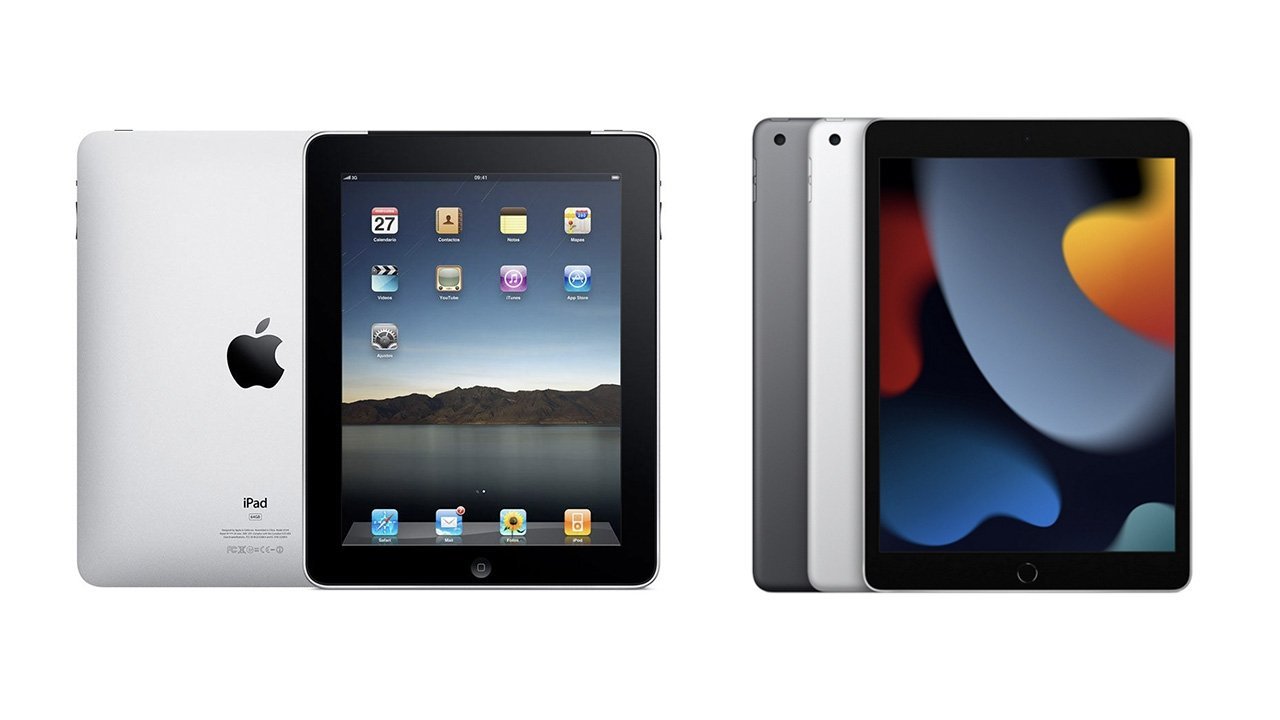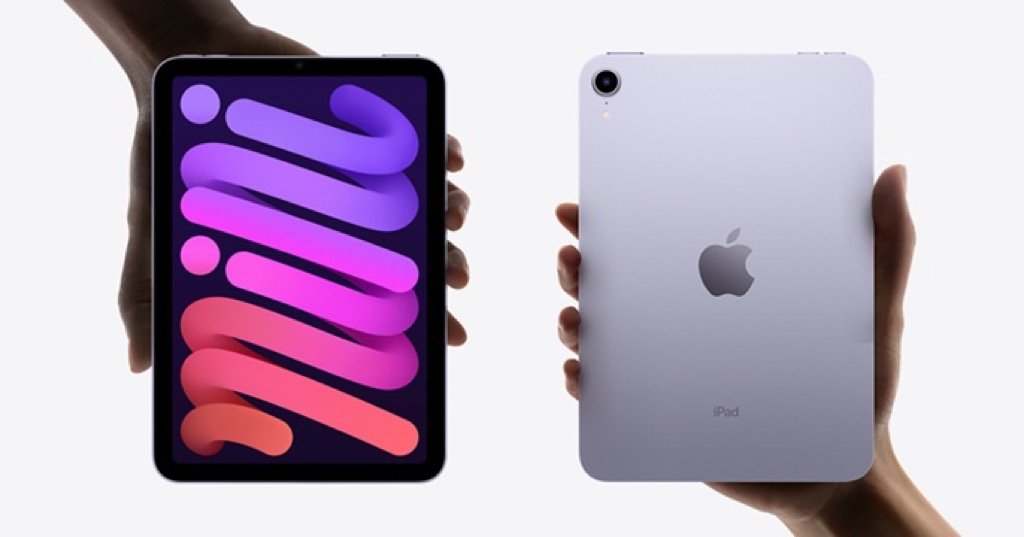April Tech Tip — Which iPad should I Purchase?
Many people know that I am an ‘Apple Guy’. I have been drawn to the Apple ecosphere for more than fifteen years now, and had some interest even before then. My first foray into Apple was a Mac Mini in 2008. That was a new computer for them at the time and clearly was a lower cost way to introduce people like me to the Macintosh lifestyle. My jobs essentially required a Windows-based device, and there were no smartphones at the time. (Apple had just announced the first iPhone in 2007, and I wasn’t even aware of it at the time.)
I have always been interested in technology. So this transition into Apple devices came easily, and even though there was a bit of an initial learning curve, it quickly became obvious that it was a much better computing platform when compared to Windows, at least for certain things. (The world was very much a Windows-based environment, and certain things just could not easily be done with a Mac.) That started to change as the iPhone gained in popularity and then really evolved with the introduction of the first iPad in 2010. At that point, I was all-in with Apple and was very excited about that first tablet device they were promising. I had set out to make some early Windows-based tablets work, but they were clunky and were clearly not ready for wide-scale use cases. I was a launch day customer for that iPad and have never looked back since. I would say that the introduction of the iPad was one of, if not the most, significant technology changes in my life. I have used an iPad for many things since that early April day in 2010.
The iPad is now twelve years old, and I still find it one of the most productive devices ever created. I am writing this article on an iPad, I will edit it on an iPad, I have done research for this article via my iPad. Many people assume an iPad is only for the consumption of information, and I agree, it is great for consuming information. But it is also a very capable creator as well. And over these past twelve years, Apple has developed multiple different styles of iPads to fit the specific needs of the user. This is both fantastic (from a choices and options standpoint), but can also be confusing for many would-be users and customers. It begins to force the question: which iPad do I buy?
Originally, there was only one style of iPad. It looked like a giant iPhone, offered two different memory levels, and you could choose Wi-Fi only or a cellular connection. The Wi-Fi and cellular connection choices still exist today. And with each available model, you can also select how much storage you will need. However, now there are different sizes and different processors that can change the experience you have with your mobile tablet. This is where the decision-making comes into play, and the choices can be a little confusing.
Apple offers four general groupings of the iPad product line. There is the iPad, essentially the base model which looks A LOT like the original iPad from 2010. It is a little bigger and the insides have changed, but if you place an iPad from 2010, next to the 9th generation iPad, they look nearly identical. (The newest iPad is about half as thick as the original – 0.29 inches, versus 0.5 inches – still pretty thin.)
2010 iPad (left) and the 2021 iPad (right) - (courtesy of Apple Insider)
The second iPad is the iPad Air, which has grown into something more than just being a light and easy to use tablet. This is a step up from the base level iPad, and you’ll see why below. The form of the iPad Air has evolved to look and feel more like what Apple refers to as the iPad Pro line.
Which brings us to the third group of iPad, the iPad Pros. This is the only grouping that offers two different sizes within its own category. Apple offers an 11” version of the Pro as well as a 12.9” version. These are top of the line devices that truly offer laptop capable processing power.
The final group of iPads is the iPad Mini. Arguably, this is the cutest of the devices. It just looks cool to have essentially the iPad Pro and iPad Air form factor in a small size. It is easy to hold, is a nice bump up in size when compared to the largest iPhone, yet small enough to feel compact and easier to carry around than any of the other iPads. It looks like a fun size. I think this iPad has a more specific use case, which I will cover more below. For many, this might be a great second device, if you already have a full-size iPad or want a tablet as an occasional escape from your larger laptop. You can still do anything you’d want on the larger screen, in a more compact package.
Something to keep in mind when making a purchase selection: all the current iPads run the latest iOS software and do not have any real limitations on functionality. And, believe it or not, iPads from several years ago, still can run the latest software. So you can have peace of mind that this will be a long-term investment in technology hardware. That is not something you can always say about gadgets and gizmos in today’s world.
I have avoided adding a lot of comparison charts and tech specs here. There are a million sources for different ways of comparing the iPads. I would recommend a quick view on Apple’s website if you still have questions. Below, I have included a quick synopsis of what I would recommend each iPad for. You may even find that you have a need for more than one based on how you utilize your tablets.
iPad 9th Generation
This tablet is best for the casual user, who primarily uses their tablet as a consumption device, internet browsing, and email. It is plenty powerful enough for this and is also great for watching YouTube videos, social media scrolling, and basic games for passing the time. It is a low cost of entry and also perfect for kids. At $329, it is affordable and very capable. At that price, it is Wi-Fi only (you can tether to a phone) and includes 64GB of storage.
iPad Air
This is the iPad for the majority. This is a perfect blend of power, ease of use, and cost. At $599 for the entry model, it's not cheap, but it will last for many years. Apple just updated this device with their new M1 chip, and I expect this will be powerful enough to run modern applications for the next four to five years. Consider your storage wisely. 64GB gets eaten up quickly with modern apps and games. If you are going to put multiple productivity apps and some arcade and first-person games on your iPad, you may want to bump up to the 256GB version ($749). This is a solid choice in a great form that will make its users very happy.
iPad Pro
You have a choice here between the 11” and the 12.9” version. If size is most important to you and having a compact device, the 11” makes more sense. If you are leaning in that direction, let me steer you back to the iPad Air for another look. The current spec differences between the iPad Air and the 11” iPad Pro are limited. With the Pro, you’ll get the better screen refresh, some extra RAM, and a few other ‘under the hood’ improvements, but I am not sure if it is worth the extra $200 bump in price. It does come with 128GB of storage, which is a consideration compared to the iPad Air at 64GB. But moving to the Air at 256GB is still less than the Pro by $50 and may still be the better option.
If a bigger screen is your thing, and you’re looking for more of a laptop replacement, then the 12.9” iPad Pro is the way to go. It is what I use, and I don’t think I would move away from this screen size for my everyday iPad. It doesn’t feel as big as a laptop, yet provides essentially the same screen real estate. To me, it is a laptop that can work as a tablet. It moves perfectly from creation device to consumption device in almost every situation. It is highly powerful and can handle the majority of use cases from high-end productivity management, artistic creation, and video watching and recording. This, to me, is the professional iPad you have been looking for. And for those of us that love it, we only wish for the iPadOS to catch up with its more than capable platform.
iPad Mini
The most fun iPad there is. This is a perfect size, perfect feel device for the everyday tablet that can be a bit of everything. The newest version of the iPad Mini has renewed many people’s interest in the smallest of the iPads. Bigger than a phone, but doesn’t feel like a big tablet. Great for on the go notes, reading, and even a little gaming. It has plenty of power for any, but the most extreme, use cases. I consider the Mini to be a companion device, a luxury yes (at $499), but handy nonetheless. It is great for reading articles, cleaning up some quick email, and for taking notes. It works with the latest Apple Pencil, which allows you to easily share that with your iPad Air or Pro. You pay a bit of a premium for the niche factor in this one, but for many users that will be worth it to have a very portable device with the power of a computer available at all times.
The good news is, you probably cannot go wrong with any iPad you select, but there is likely one that is the best fit for your specific needs. My default answer to anyone asking would be the new iPad Air. I think it is the best mix of power, function, size, and price. Another thing to consider would be looking at Apple refurbished products. This can be a good way to get some additional specs, and save a little money. For example, a refurbished 11” iPad Pro with 128GB of storage might be a great alternative to the new iPad Air and the cost might not be that different. Hopefully, the deeper look at each of the devices above helped to narrow it down for you.
Join other retail leaders in continuing their development journey with Effective Retail Leader.com. SUBSCRIBE today to receive leadership tips directly to your inbox and monthly newsletters that provide many tools to help further develop your leadership skills. JOIN NOW!






